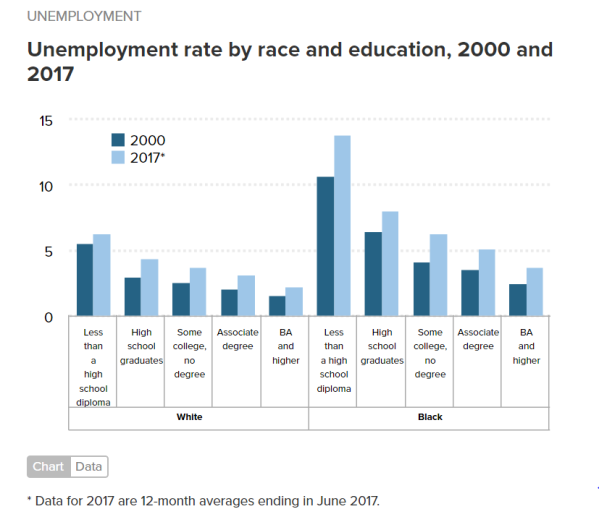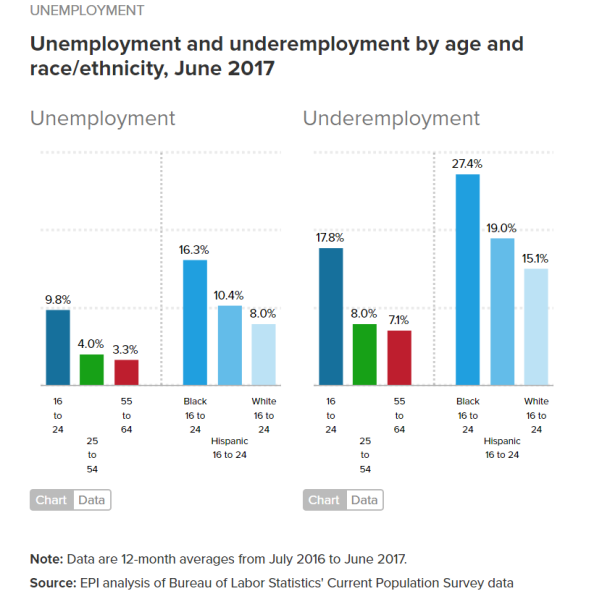The US labor market, much like US society, is marked by discrimination. The following charts, taken from two Economic Policy Institute blog posts [see chart captions below —Eds.], highlight some of the labor market consequences of racial and ethnic discrimination.
The following chart makes clear that Blacks suffer far higher rates of unemployment than do Whites, at all levels of educational achievement. In fact, the black unemployment rate for those with a BA and higher was identical to the White unemployment rate for those with some college but no degree, both at 3.7 percent in June 2017. The chart also shows the general rise in unemployment since 2000.

Elise Gould and Valerie Wilson, “The black unemployment rate returns to historic low, but not really,” Working Economics Blog, Economic Policy Institute (July 7, 2017).
The next chart illustrates how unemployment and underemployment rates differ by age and race/ethnicity. The underemployment rate, officially known as the U-6 rate by the Bureau of Labor Statistics, “includes not only unemployed workers but also those who are working part time because they can’t find full-time work (i.e., part time for economic reasons) and those who are marginally attached to the labor force.”
As we can see, while all young workers suffer high levels of unemployment and underemployment, the rates for Black youth (more than 1 in 4 underemployed) and Hispanic youth (approximately 1 in 5 underemployed) are significantly higher than for White youth.

See Elise Gould, “Young workers face a tougher labor market even as the economy inches towards full employment,” Working Economics Blog, Economic Policy Institute (July 19, 2017).
These racial/ethnic differences mean that our general push for more and better jobs must be accompanied by policies designed to overcome the discriminatory and segmented nature of the US labor market.

